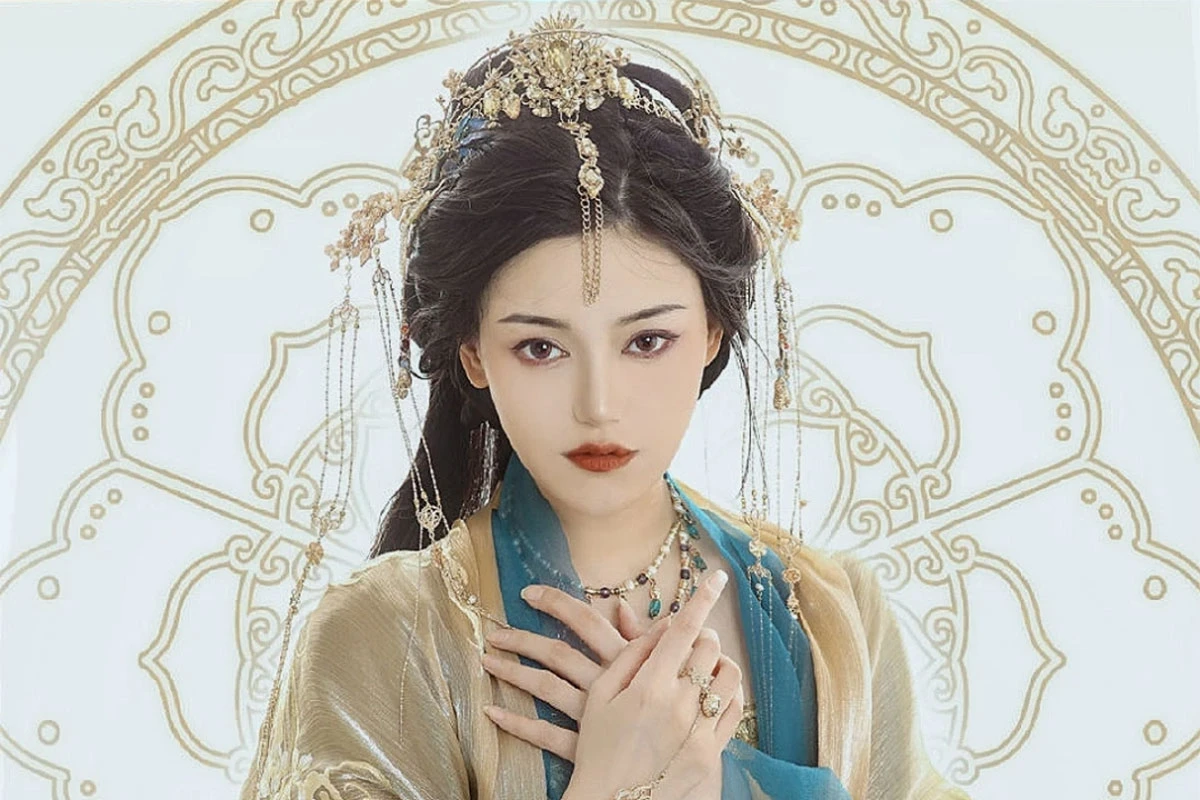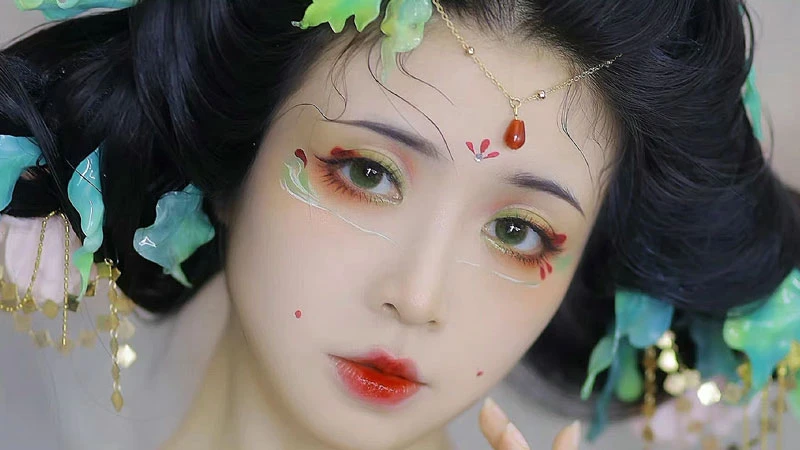To truly appreciate the beauty and significance of women’s Hanfu, we embark on a brief historical journey. Hanfu dates back thousands of years, with its roots intertwined with the evolution of Chinese civilization. It flourished during various dynasties, each contributing distinctive styles and features to this exquisite attire.
While the historical significance of Hanfu is undeniable, what truly captivates the modern imagination is its revival. In recent decades, there has been a groundswell of interest in traditional clothing, with a particular focus on women’s Hanfu. The resurgence is not merely a nostalgic nod to the past but a vibrant reclamation of cultural identity and an expression of personal style.
Across social media platforms, we witness a kaleidoscope of images featuring women adorned in Hanfu, attending events, weddings, or simply strolling through the urban landscape. This resurgence is not confined to China; it has transcended borders, captivating the global audience and fostering a renewed appreciation for the artistry embedded in every fold of this timeless attire.
Variations and Styles
As we venture deeper into the realm of women’s Hanfu, it’s essential to acknowledge the rich diversity that defines this traditional attire. China’s vast geography and varied cultural influences have given rise to a plethora of regional Hanfu styles. From the flowing sleeves of the Ming dynasty to the more form-fitting designs of the Tang dynasty, each style tells a unique story.
In the northern regions of China, Hanfu exhibits a characteristic grace, often marked by loose-fitting robes and elaborate headpieces. The attire reflects the colder climate, with layered garments providing both warmth and aesthetic appeal. The influence of dynasties like the Tang and Song is particularly pronounced in the northern styles, where intricate embroidery and vibrant colors take center stage.
Conversely, the southern regions boast Hanfu styles characterized by a sense of elegance and delicacy. The costumes are often lighter, with a focus on silk fabrics that drape gracefully. The Hanfu of the Song and Ming dynasties exert a profound influence here, with softer lines and subtler hues capturing the essence of southern sophistication.
Classic Women’s Hanfu and Events
While the beauty of Hanfu extends beyond ceremonial events, there are specific occasions where the attire truly shines. Understanding the appropriateness of different styles for various events adds a layer of cultural fluency to the wearer’s experience.
One of the most celebrated events where women’s Hanfu takes center stage is weddings. The bride, adorned in resplendent Hanfu, becomes a living embodiment of tradition and grace. The choice of colors often carries symbolic meaning, with red representing joy and prosperity, while other hues may signify fertility or marital bliss.
Hanfu is not limited to formal events; it has seamlessly integrated into festive occasions and cultural celebrations. During traditional festivals like the Spring Festival or Mid-Autumn Festival, women may choose Hanfu that reflects the thematic colors and motifs associated with each celebration.
Female Hanfu Fabric, Colors, and Patterns
The allure of women’s Hanfu lies not only in its historical significance but also in the meticulous craftsmanship that goes into its creation. Choosing the perfect Hanfu involves a thoughtful consideration of fabric, colors, and patterns, each contributing to the overall aesthetic.
Silk, with its luxurious texture and sheen, has been a longstanding favorite for Hanfu enthusiasts. The choice of fabric contributes significantly to the overall feel and comfort of the attire. Some may prefer the smoothness of silk for formal occasions, while others may opt for more breathable fabrics for casual wear.
Colors play a pivotal role in Hanfu, with each hue carrying symbolic significance. Red, symbolizing happiness and good fortune, is often chosen for weddings, while softer pastels convey a sense of grace and femininity. The palette available for Hanfu is expansive, allowing wearers to express their personalities through a kaleidoscope of colors.
The art of Hanfu extends beyond the cut and color to intricate patterns and embroidery. Traditional motifs often include auspicious symbols, nature-inspired designs, or representations of mythical creatures. The choice of patterns adds depth to the storytelling aspect of Hanfu, with wearers often selecting motifs that resonate with personal meaning.
Traditional vs. Modern Influences in Design
In the evolving landscape of fashion, women’s Hanfu has not remained untouched by modern influences. The fusion of traditional elements with contemporary design has given rise to a spectrum of styles, catering to a diverse audience with varied tastes.
Many Hanfu enthusiasts find joy in striking a balance between honoring tradition and infusing a modern aesthetic. Designers often experiment with innovative cuts, unconventional color combinations, and even incorporate elements from other cultures, creating a fusion that resonates with a younger generation.
The resurgence of Hanfu has paved the way for the emergence of contemporary brands dedicated to preserving the essence of this traditional attire while adapting it to modern lifestyles. These brands often collaborate with young designers, resulting in collections that breathe new life into Hanfu, making it accessible and appealing to a broader audience.
While Hanfu has deep historical roots, its versatility allows for integration into contemporary wardrobes. Embracing Hanfu in everyday fashion is an art that combines tradition with a modern aesthetic.
Blending Hanfu with Modern Pieces
One approach to seamlessly integrate Hanfu into everyday wear is by pairing traditional pieces with modern garments. For example, a Hanfu-inspired top can be paired with jeans or a skirt for a stylish fusion of the old and the new. This not only adds a touch of elegance to casual settings but also makes Hanfu more accessible for daily wear.
Contemporary designers have been instrumental in creating Hanfu-inspired designs tailored for casual wear. These styles often feature simplified cuts and more casual fabrics, making them suitable for a variety of settings. This evolution has opened up new avenues for enthusiasts to incorporate Hanfu into their daily lives without compromising comfort or style.
Accessories play a crucial role in elevating any fashion ensemble, and Hanfu is no exception. Thoughtfully chosen accessories can enhance the overall look, adding a personalized touch to the traditional attire.
Elaborate hair accessories are a hallmark of traditional Hanfu attire. From intricate hairpins to ornate headpieces, these details contribute to the overall elegance of the look. In modern styling, these accessories can be adapted to suit different hairstyles, adding a touch of sophistication to any outfit.
Traditional Hanfu is often paired with delicate, embroidered shoes. In modern times, comfort is a key consideration, leading to the adaptation of these shoes into more wearable forms. Many Hanfu enthusiasts opt for comfortable yet stylish footwear that complements the overall aesthetic.
From local meetups to international events, the Hanfu community organizes gatherings that celebrate the beauty of traditional attire. These events provide a platform for enthusiasts to showcase their Hanfu, exchange styling tips, and forge connections with like-minded individuals.
In conclusion, the resurgence of women’s Hanfu goes beyond fashion; it is a cultural movement that breathes new life into ancient traditions. From understanding the diverse regional styles to navigating the nuances of modern styling, women’s Hanfu is a canvas that allows for both cultural preservation and personal expression. As we celebrate its elegance, let us also embrace the responsibility of preserving its cultural integrity.


